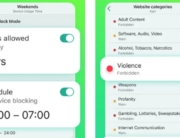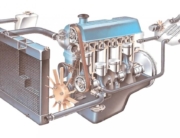commonly known as the “payday financing guideline.” The rule that is final ability-to-repay needs on loan providers making covered short-term loans and covered longer-term balloon-payment loans. The last rule additionally limits efforts by loan providers to withdraw funds from borrowers’ checking, cost savings, and prepaid records employing a “leveraged payment system. for many covered loans, as well as for particular longer-term installment loans”
Generally speaking, the ability-to-repay provisions of this guideline address loans that want payment of most or almost all of a financial obligation at the same time
such as for example pay day loans, automobile name loans, deposit improvements, and longer-term balloon-payment loans. The guideline describes the second as including loans with a single repayment of all of the or almost all of the debt or by having re re payment that is a lot more than two times as large as virtually any re re re payment. The re re re payment conditions withdrawal that is restricting from customer records affect the loans included in the ability-to-repay conditions along with to longer-term loans which have both a yearly portion price (“APR”) more than 36%, utilizing the Truth-in-Lending Act (“TILA”) calculation methodology, therefore the existence of a leveraged re re payment device that provides the financial institution authorization to withdraw re re re payments through the borrower’s account. Exempt through the guideline are charge cards, figuratively speaking, non-recourse pawn loans, overdraft, loans that finance the purchase of a motor vehicle or any other customer item that are guaranteed because of the bought item, loans guaranteed by property, particular wage improvements and no-cost improvements, particular loans fulfilling National Credit Union management Payday Alternative Loan demands, and loans by specific lenders whom make just a small amount of covered loans as rooms to customers.
The rule’s ability-to-repay test requires loan providers to judge the income that is consumer’s debt burden, and housing expenses, to acquire verification of particular consumer-supplied information, and also to calculate the consumer’s basic living expenses, to be able to see whether the customer should be able to repay the requested loan while fulfilling those current responsibilities. Included in verifying a borrower’s that is potential, loan providers must have a customer report from a nationwide customer reporting agency and from CFPB-registered information systems. Loan providers would be needed to provide information regarding covered loans to every registered information system. In addition, after three successive loans within thirty day period of each and every other, the rule needs a 30-day “cooling off” duration following the 3rd loan is compensated before a consumer can take away another covered loan.
Under an alternate option, a loan provider may extend a short-term loan all the way to $500 without having the full ability-to-repay determination described above in the event that loan just isn’t a automobile name loan. This choice enables three successive loans but only when each successive loan reflects a decrease or step-down into the major quantity add up to one-third for the initial loan’s principal. This alternative option just isn’t available if deploying it would bring about a customer having significantly more than six covered short-term loans in year or becoming in financial obligation for longer than ninety days on covered short-term loans within one year.
The rule’s provisions on account withdrawals need a https://www.badcreditloanshelp.net/payday-loans-sc/ loan provider to have renewed withdrawal authorization from the borrower after two consecutive attempts that are unsuccessful debiting the consumer’s account. The rule additionally calls for notifying customers on paper before a lender’s very first effort at withdrawing funds and before any uncommon withdrawals which are on various times, in various quantities, or by various networks, than frequently planned.
The final guideline includes a few significant departures through the Bureau’s proposition of June 2, 2016. In specific, the rule that is final
- Doesn’t expand the ability-to-repay needs to longer-term loans, except for people who include balloon payments;
- Defines the price of credit (for determining whether that loan is covered) utilizing the TILA APR calculation, as opposed to the formerly proposed “total price of credit” or APR that is“all-in” approach
- Provides more freedom within the ability-to-repay analysis by permitting use of either a continual earnings or debt-to-income approach;
- Allows lenders to count on a consumer’s stated earnings in certain circumstances;
- Licenses loan providers take into consideration scenarios that are certain which a customer has access to shared earnings or can depend on costs being provided; and
- Will not follow a presumption that the customer is going to be not able to repay that loan tried within thirty day period of a previous loan that is covered.
The guideline will require impact 21 months following its book into the Federal join, aside from provisions enabling registered information systems to start form that is taking that will take impact 60 days after book.






